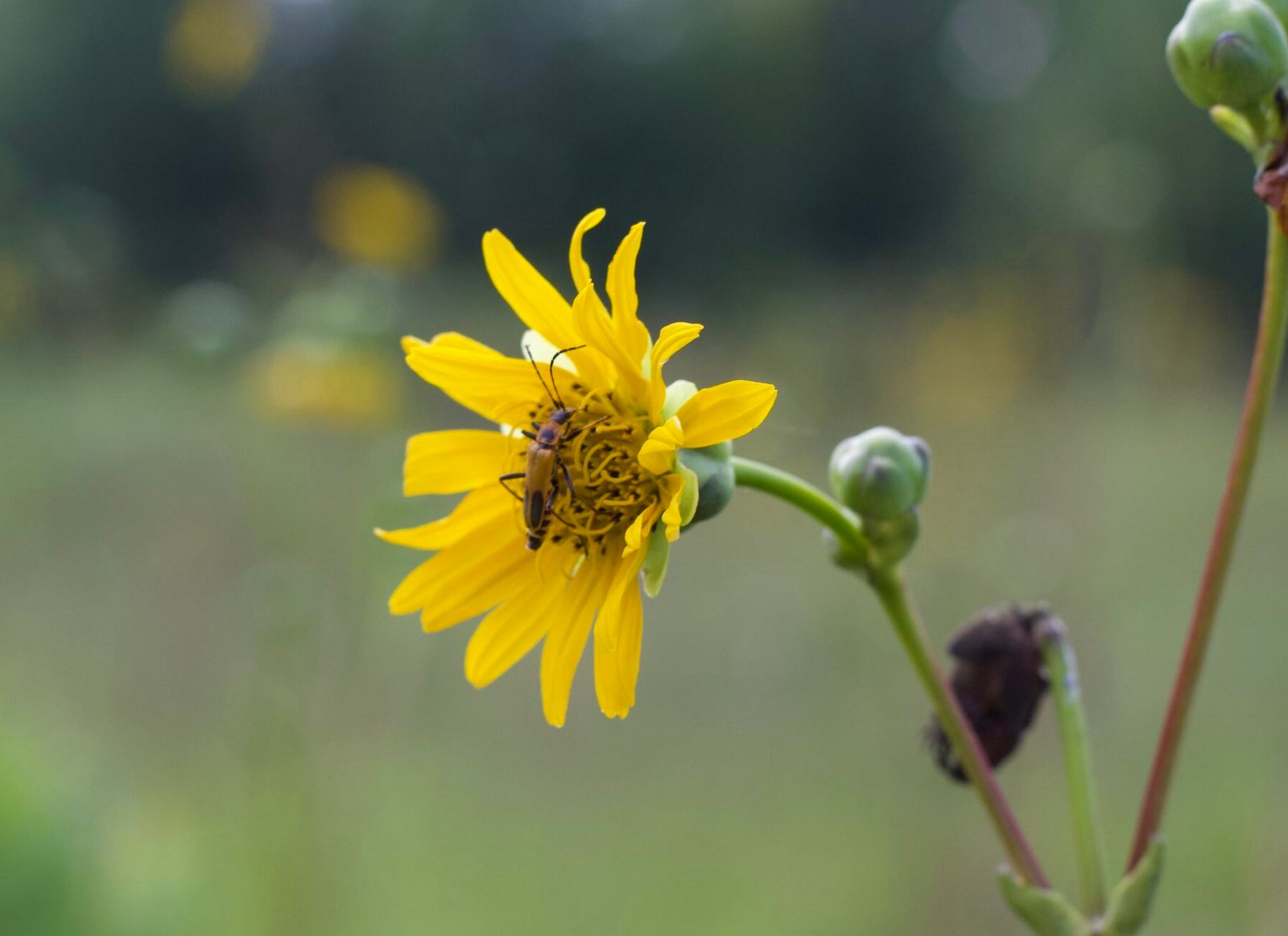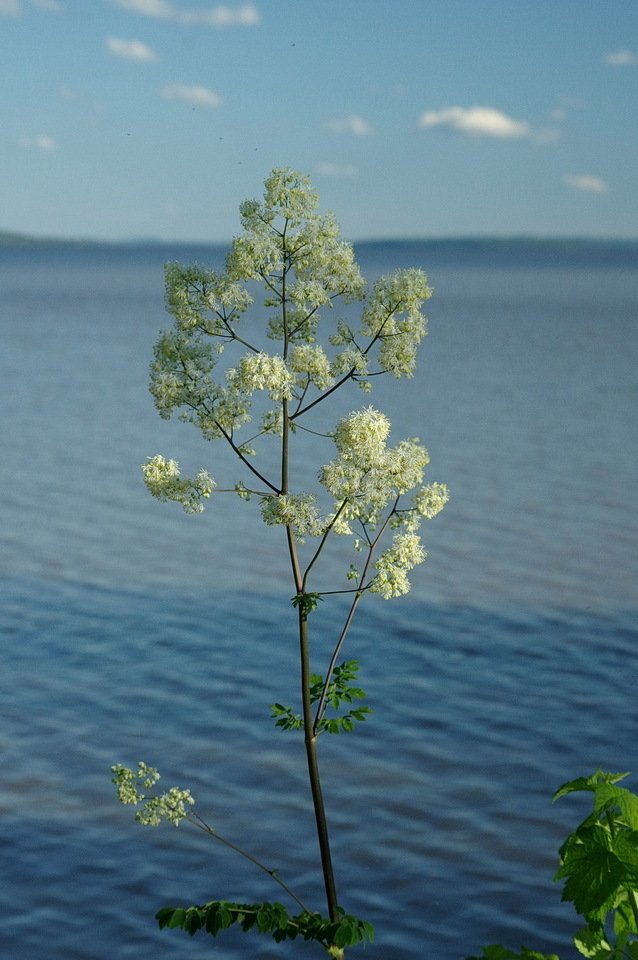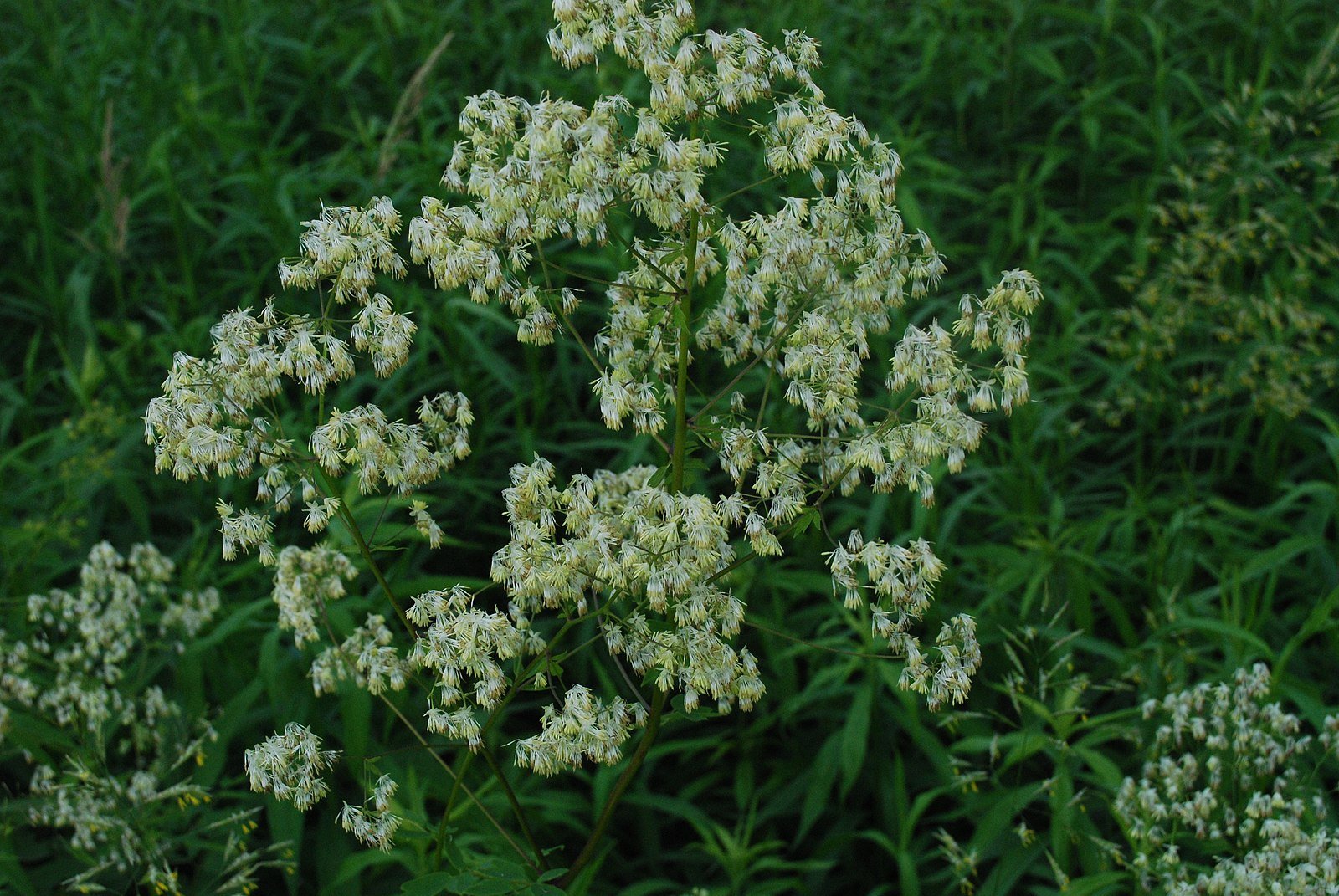Understated, Wild, and One-of-a-Kind
When we think of “unique” flowers, it’s often the big, bold, or showy blooms that get the spotlight. But there’s another kind of uniqueness in the native plant world—plants that bring quiet elegance, unusual structure, or a wild character that can’t be replicated by ornamentals. These understated natives are subtle, but their beauty and ecological value make them one-of-a-kind treasures for your garden.
In this final installment of the Wildly Unique series, let’s look at five unusual native plants that embody that quiet, wild beauty.
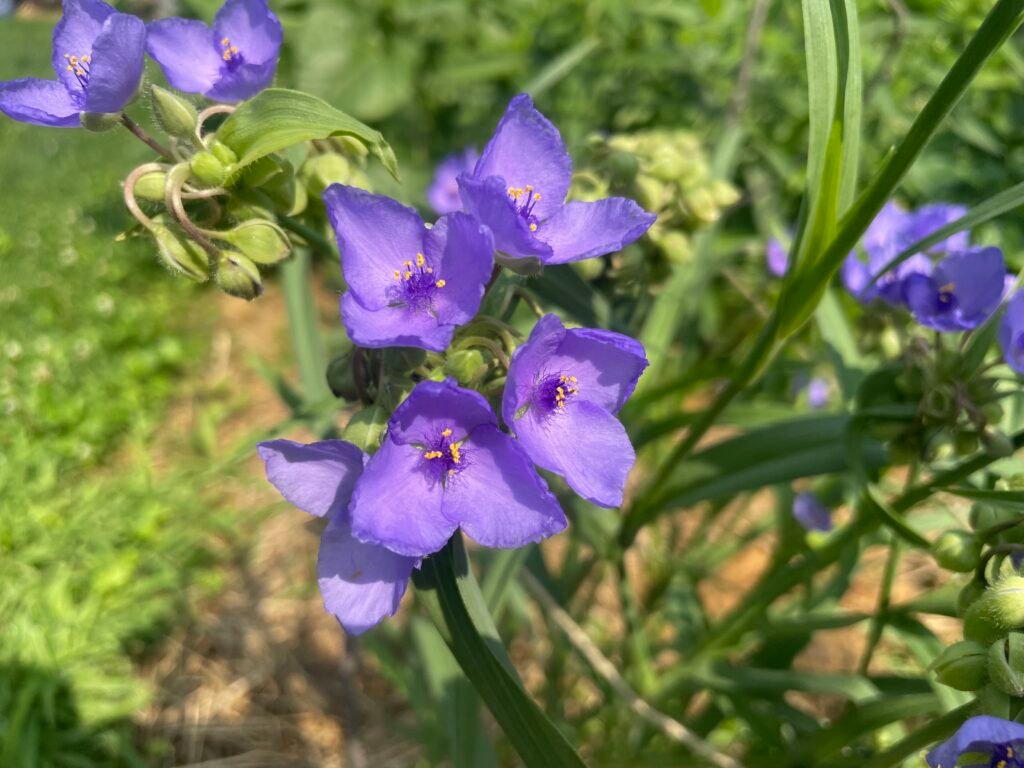
1. Ohio Spiderwort (Tradescantia ohiensis)
- Family: Commelinaceae
- Common Names: Bluejacket, Spiderwort
- Height: 2–3 feet
- Bloom Time: May–July
- Flower Color: Blue to violet
- Native Region: Eastern and Central U.S.
- Hardiness Zones: 4–9
With triangular blue-violet blooms that open for only a single morning, Spiderwort is a plant of fleeting beauty. Each flower lasts just a day, but new buds appear daily for weeks, offering a rolling display in early summer. Its grasslike foliage and clumping form make it a graceful addition to prairies, meadows, or shady edges.
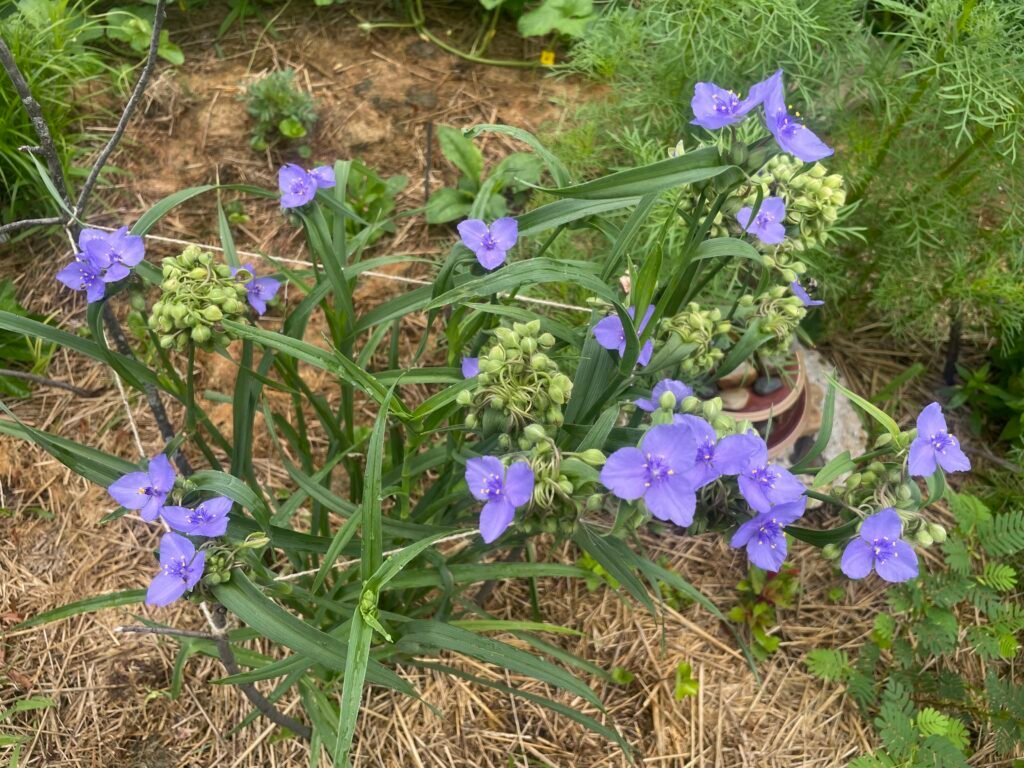
How to Grow: Prefers medium to moist soils and tolerates both sun and part shade. Allowing it to sprawl creates a naturalistic look.
Wildlife Value: Provides nectar and pollen for native bees, especially sweat bees.
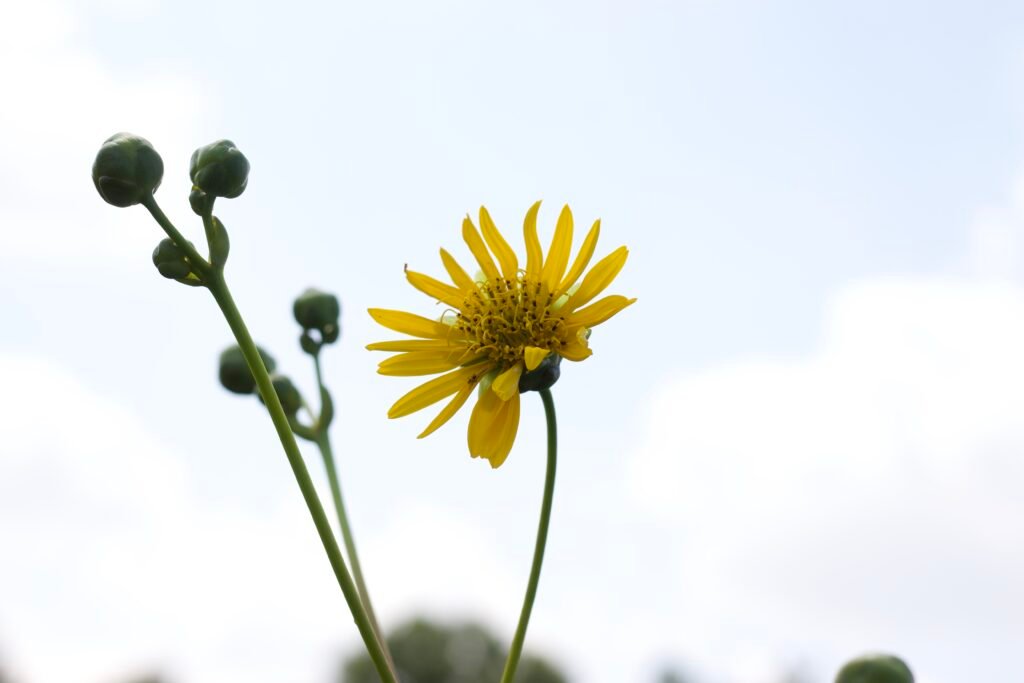
2. Prairie Dock (Silphium terebinthinaceum)
- Family: Asteraceae
- Common Names: Prairie Dock
- Height: 4–10 feet (flower stalks)
- Bloom Time: July–September
- Flower Color: Yellow
- Native Region: Midwest and Eastern Tallgrass Prairie
- Hardiness Zones: 4–8
One of the boldest foliage plants of the prairie, Prairie Dock forms a low rosette of enormous, leathery leaves—some reaching nearly 2 feet long. In midsummer, towering stalks rise well above the foliage, topped with clusters of yellow sunflower-like blooms. It’s architectural, dramatic, and impossible to overlook.
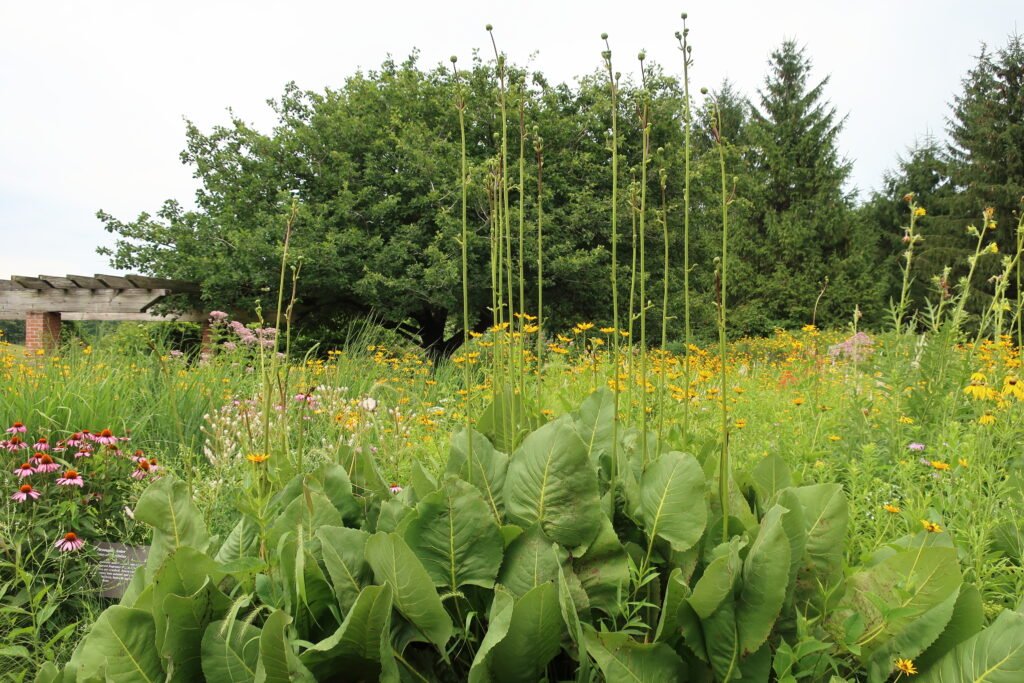
How to Grow: Requires full sun and well-drained to dry soils. Deep roots make it drought tolerant once established.
Wildlife Value: Goldfinches love the seeds, while bees flock to the flowers for late-summer pollen and nectar.
3. Purple Meadow Rue (Thalictrum dasycarpum)
- Family: Ranunculaceae
- Common Names: Purple Meadow Rue
- Height: 3–6 feet
- Bloom Time: May–July
- Flower Color: Creamy-white, wispy clusters
- Native Region: Midwest, Great Plains, Eastern U.S.
- Hardiness Zones: 4–8
This airy perennial brings a sense of lightness to damp meadows and woodland edges. The finely divided foliage looks almost fernlike, while the delicate flower clusters—clouds of dangling stamens—create a hazy, ethereal effect. Though not flashy, it’s unforgettable once you’ve seen it in bloom.
How to Grow: Prefers moist soils in sun to part shade. Works beautifully at the back of shady borders.
Wildlife Value: Attracts a variety of pollinators, particularly small bees and flies.
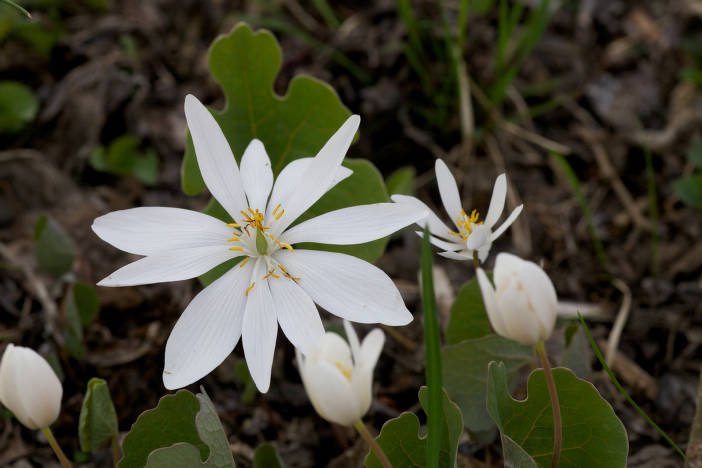
4. Bloodroot (Sanguinaria canadensis)
- Family: Papaveraceae
- Common Names: Bloodroot
- Height: 6–12 inches
- Bloom Time: March–April
- Flower Color: White
- Native Region: Eastern North America
- Hardiness Zones: 3–8
A true spring ephemeral, Bloodroot emerges in early spring with pure white, daisy-like flowers that glow against the brown forest floor. Its name comes from the red sap in its rhizomes, once used by Indigenous peoples as a dye. After blooming, its unique, lobed leaves remain through summer, adding texture to the understory.
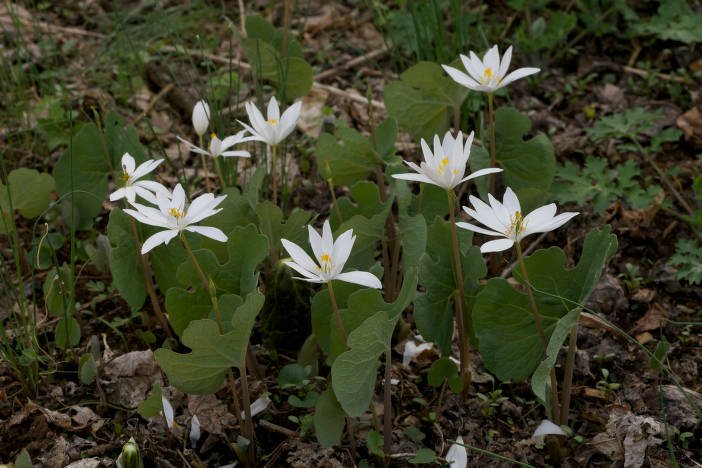
How to Grow: Best in rich, moist, well-drained woodland soils with part to full shade. Spreads slowly by rhizomes.
Wildlife Value: Early bees visit the flowers, and ants disperse the seeds (a process called myrmecochory).
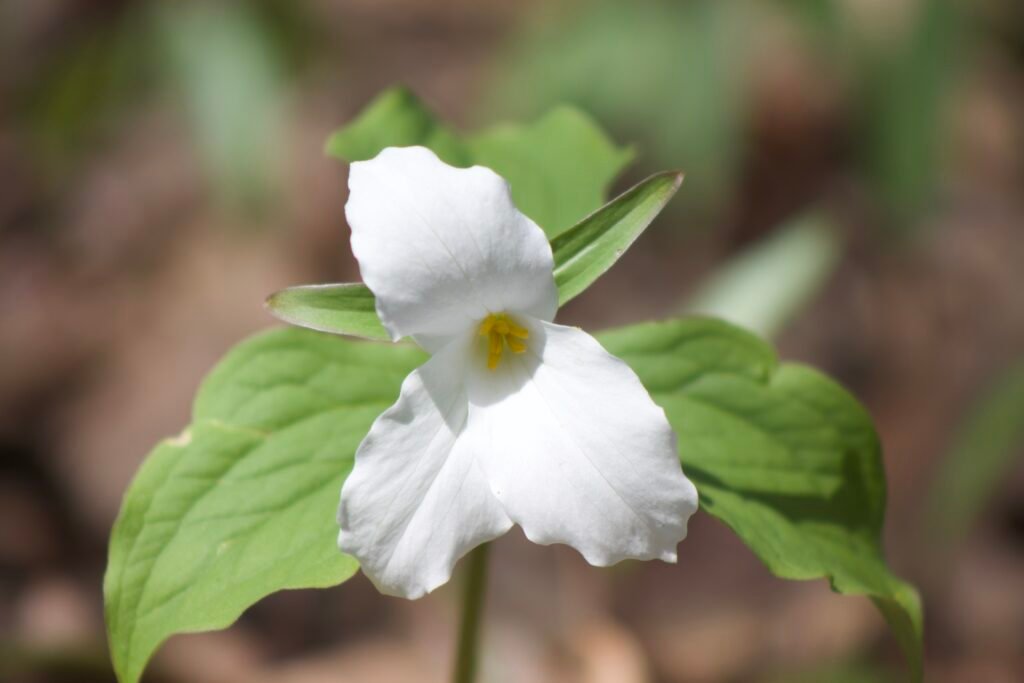
5. Large-Flowered Trillium (Trillium grandiflorum)
- Family: Melanthiaceae
- Common Names: White Trillium, Great White Trillium
- Height: 12–18 inches
- Bloom Time: April–May
- Flower Color: White (fading to pink)
- Native Region: Eastern North America
- Hardiness Zones: 4–8
Perhaps the most iconic spring wildflower of the eastern woods, Large-Flowered Trillium bears a single, elegant three-petaled bloom rising above three broad leaves. Its pristine white blossoms carpet the forest in spring, later aging to soft pink.
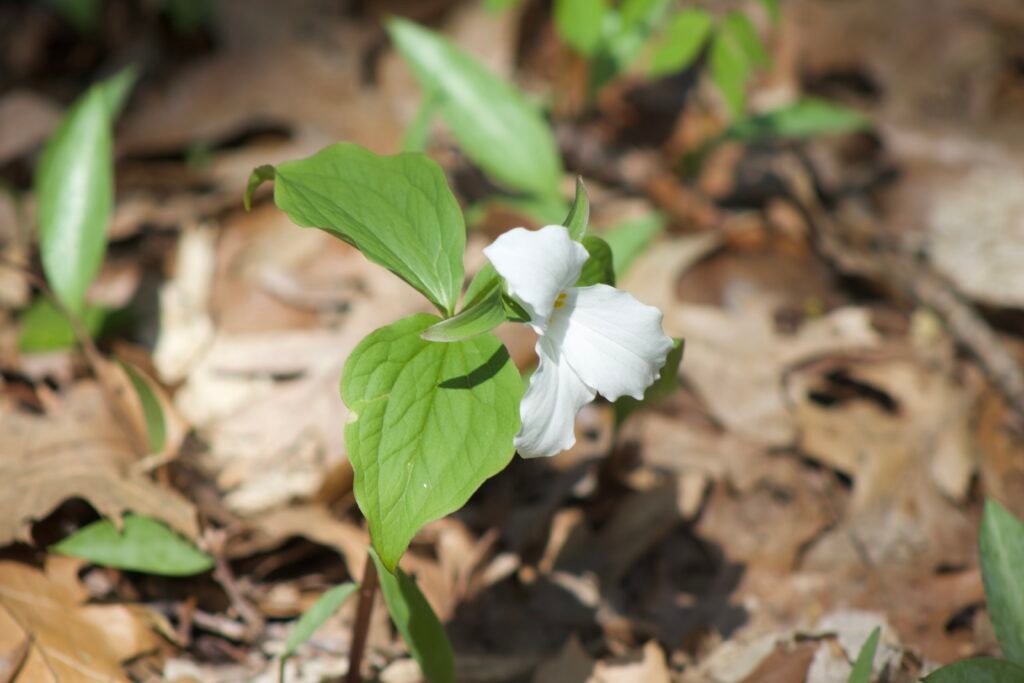
How to Grow: Requires rich, humusy soil in part to full shade. Slow to establish, but worth the patience.
Wildlife Value: Supports early-flying pollinators, especially bumble bees. Seeds are dispersed by ants.
The Quiet, Wild, and Irreplaceable
Unlike the bold, eccentric blooms of Part 1, or the quirky personalities of Part 2, these Part 3 plants show that uniqueness can be subtle. Their beauty lies in quiet structure, fleeting presence, and wild character—reminders that the native plant world is full of surprises.
This wraps up the Wildly Unique series. A glance at some of my personal favorite native aliens right in our backyard. Whether you’re working with a shady woodland, a sunny prairie, or something in between, these weirdos can help bring a deeper sense of wildness and ecological richness to your garden.
Check out the hive
The Hive is a personalized native plant database, curated from scientific resources and tailored to your exact ecoregion. It offers detailed growing information for over 75 species.

